Are You Feeling Lucky?
This edition shares my insights from a Florida trip to Digital Graffiti and MAD Arts and explores the role of luck in success.

Heads up! This is a long one as a couple of significant things happened in May: a trip to Florida to attend Digital Graffiti and visit MAD Arts, as well as nearing the completion of the lotus arch.
Before I get into the details, I want to share part of an email I recently received that connects to the main theme of this newsletter.
(If you want to skip this part and go right to the updates, scroll down to the header that says DIGITAL GRAFFITI AND MAD ARTS.)
Let me start with this:
You’re not the problem.
You’ve been showing up.
You’ve been learning, creating, pushing through.
But the truth is, the game has been shifting under your feet—quietly.
And no one’s really been talking about it.
When I first picked up a camera over a decade ago, the hardest part was just figuring out how to make a good video.
If you knew how to shoot manual, record clean audio, and edit a decent sequence—you were ahead.
That’s not the case anymore.
Now… that’s just the baseline.
Everyone’s got access to a camera.
There are thousands of tutorials for every editing trick.
There are 17-year-olds who color grade better now than the pros ten years ago.
The skills that once made you stand out… are now what’s required just to get in the room.
And that’s where a lot of creators get stuck.
Because even if you’re crazy talented…
Even if you’ve put in the hours…
Even if your work is objectively great…
You’re still not seeing the traction you thought you would.
And at some point, that starts to wear on you.
You think, “I should be further along by now.”
Or “Maybe I’m just not cut out for this.”
If you’ve been there—I see you.
And I’ve talked to thousands of creators over the last 10 years who are right there with you.
The simple truth is that the old model stopped working.
And if we don’t evolve with where things are headed, we’re going to be left in the dust.
It goes on to say that for things to turn around, you just have to decide what you really want and shift your mindset. (And also buy their course, which they will announce in an upcoming email.)
They’re not wrong, evolution and mindset are important. However to suggest that those things alone are the key to gaining traction, while also saying things like, “The reason why most people aren’t living the life they want to live is because they don’t take the time to simply think about what they want,” is at best marketing BS and at worst callous and, ironically, thoughtless.
And yet a lot of people believe that’s all it takes to be successful, including myself at one point, which is why this type of marketing works.
Now I can look back and see that my most significant work came from being in the right place at the right time to make connections with people who liked me and my work and later not only hired me, but trusted me to handle projects that included aspects I had no prior experience with.
It was luck.
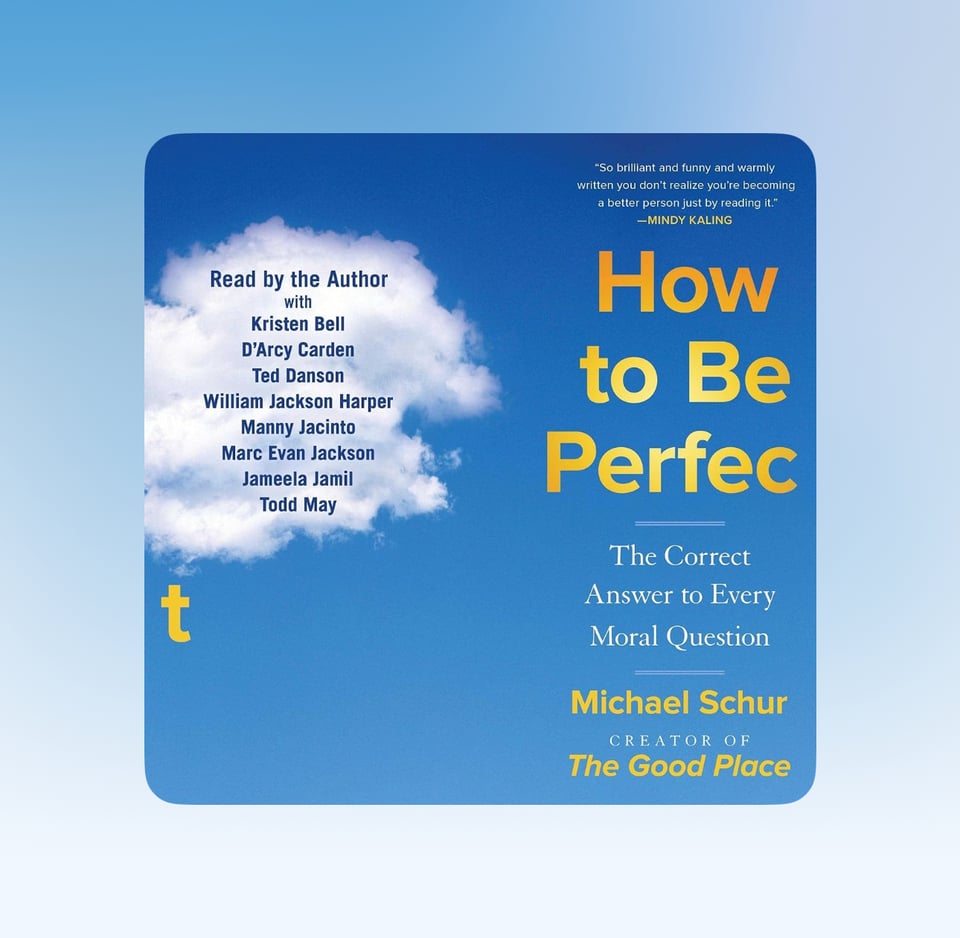
Michael Schur, the creator of the television show The Good Place, addresses luck in his book “How to Be Perfect: The Correct Answer to Every Moral Question.” (It’s an excellent show if you haven’t watched it.) Since driving from Minnesota to Florida and back is a loooooooong trip, I had a chance to finish two audiobooks, and this was one of them.
For a little over 19 minutes in the second half of chapter twelve he goes over all of the things that happened by chance in his own life, beginning with his birth, that helped him become the creator of The Good Place and a well-known producer. He mentions his time at Harvard where he was involved with Lampoon Magazine and knew people who went on to work at Saturday Night Live. They agreed to help him submit a packet of material, and he was hired.
He admits that for his first year at SNL he was an awful sketch writer whose sketches regularly bombed during table reads, but that circumstances which happened shortly before he was hired—Norm MacDonald being fired and the death of Chris Farley—meant there was so much turbulence that no one noticed he was even there, let alone how bad he was. That gave him time to figure out how to improve, which he did.

After his time at SNL, he moved from New York to Los Angeles to live with his girlfriend. It just so happened to be at the exact time that Greg Daniels decided to adapt the British TV show The Office for American television.
He submitted scripts to both Daniels and another producer who had a show with a better initial offer from the studio (13 episodes versus The Office’s 6 episodes). The meeting with the 13 episode show went poorly due to insomnia the night before (which he said he very rarely experiences), and he didn’t get the job. However, he did get the job with Daniels.
He emphasizes that his success with The Office was mostly due to happenstance. While he can attribute his talent and skill to Daniels selecting his script, he never would have been looking for work in LA if he didn’t have a serious relationship with his girlfriend that resulted in a cross-country move. If he had slept well and been offered the 13 episode job, he would’ve accepted it because it was a less risky career move.
He says: “That belief [that we make our own luck] allows us to feel like we have control over this big, dumb, scary world. That if we’re smart and we work hard, you will be appropriately rewarded and everything will be fine. Conceding that a lot of this is just dumb luck, including, most significantly, embryo-related stuff that happened before we were even conscious beings, is to concede that there were other factors at play beyond our own incredibleness, and that maybe we’re not as amazing as our lot in life would indicate.”
Understanding that we’re not totally in control means we can take some of the pressure off of ourselves. Being smart and working hard is the best we can do. The rest is out of our hands.
I attribute my entire trip to Florida to luck. I’ve done extensive research on projection mapping festivals and immersive galleries and Digital Graffiti and MAD Arts never came up. Had my Instagram algorithm not fed me suggested posts and ads about them, I would have never known either existed. Had I not seen the posts and ads at exactly the right time that I was able to get tickets and make affordable travel accommodations, I would have never gone.
DIGITAL GRAFFITI AND MAD ARTS
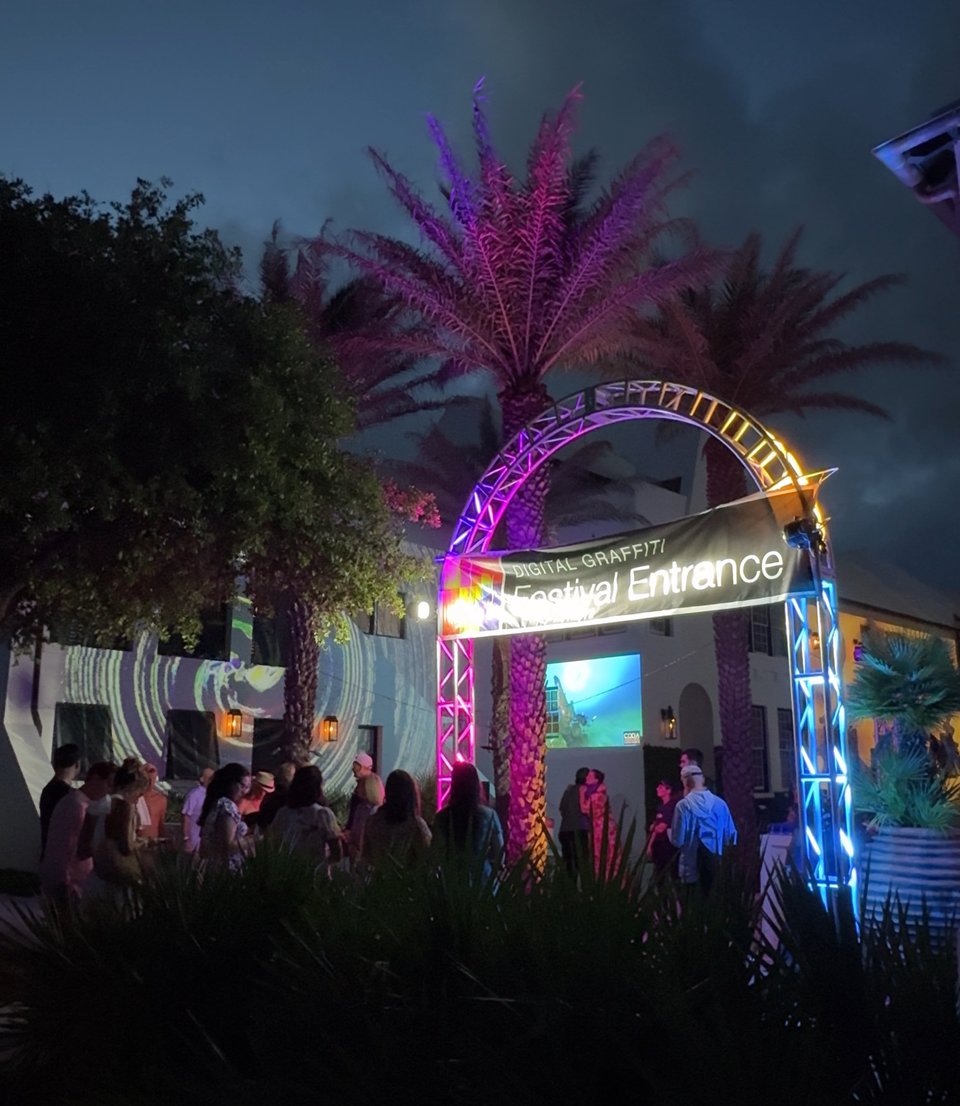
Digital Graffiti is a projection mapping festival held in the private community of Alys Beach where all of the homes are white—an ideal backdrop for projections. It's a ticketed event with free panel discussions and most of the artists in attendance, which is why I felt compelled to go. I saw it as an opportunity to connect with people in the field and ask questions.

I did my best to get over my social anxiety and approach a couple of people, but being an outsider made conversation difficult. I was able to meet the curator and one of the judges, but ultimately left with the same questions I went in with. I was reassured that I don’t need to go back to school to get into the industry, but didn’t get any straight answers about good ways to start.

The Best in Show piece (seen above), created by Finnish artist Niko Tiainen, consisted of photographs and satellite data of the Alys Beach area that were plugged into an algorithm that reconfigures them (or, to use a less technical term, smushes them together) and continuously generates movement.
Overall I’m glad that I attended as it gave me a different perspective on the industry and a broader understanding of what is being done with projection mapping than I received from attending Blink last year.
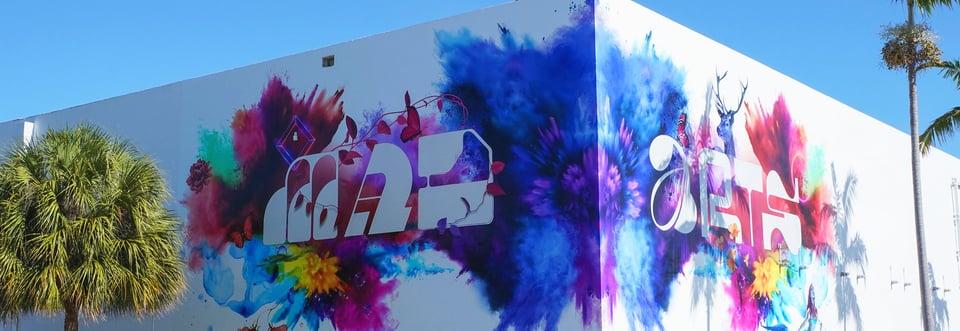
MAD Arts is an arts organization and production studio in Dania Beach that has a public immersive art gallery. When I went on their website to buy a ticket, I saw they offer VIP tours by request, so I reached out.
They graciously offered to give me a free tour of the gallery and a behind the scenes look at their operation on a day they’re closed since that’s what worked best for my travel schedule. I was blown away by the work they have and would highly recommend visiting their space if you find yourself in the Miami area.
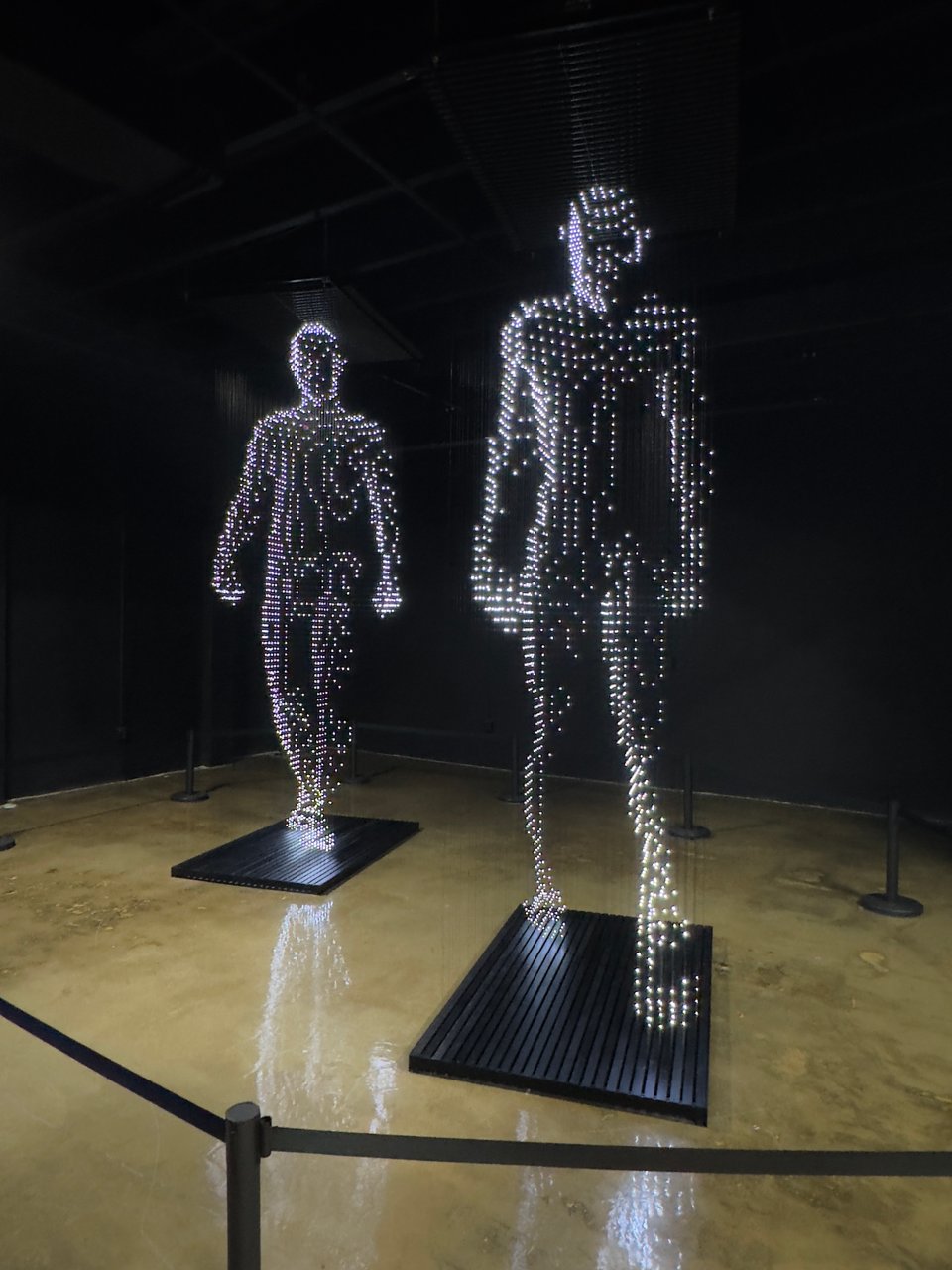
They also invited me to send in a submission to the Ignite art and light festival that they produce in February. When I asked for submission guidelines and a deadline, they said there really aren’t any guidelines and I should send it in as soon as possible.
Luckily, I recently connected with a video artist on Instagram who had an installation at this year’s Ignite festival and has been very kind, so I reached out to them when I got home to ask what a proposal usually consists of. They said mockups, what equipment is needed, size requirements, budget, concept/inspiration, and an “about you” description.
Seeing as I don’t know the first thing about putting together a budget or equipment list since I don’t have any experience with equipment outside of my own projector, all I could do is pitch a concept with mockups. I was upfront about my knowledge gap as there’s honestly no way to fake my way through that. So far I’ve only received a response saying they would review it and get back to me. I’ll be sure to update you about it in the next newsletter!
That brings me to the lotus arch.
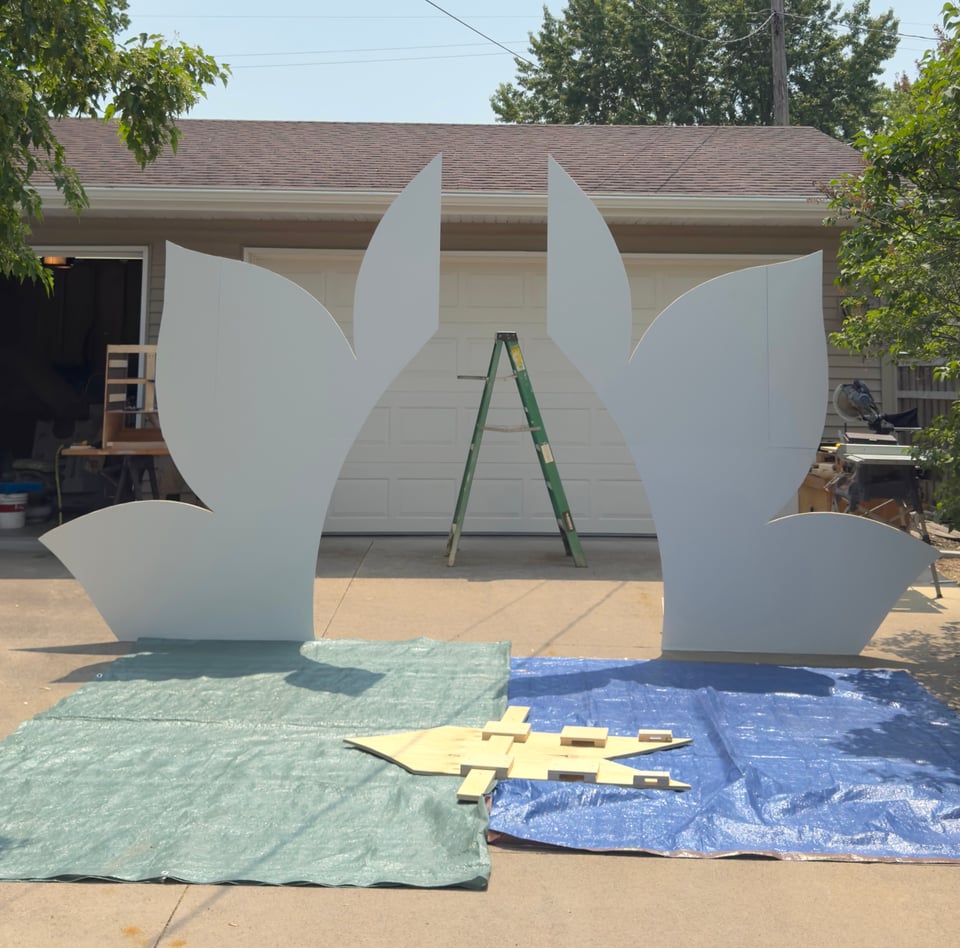
Admittedly I didn’t foresee that my plan would be a considerable undertaking for one person. After getting all of the pieces assembled, I learned that lifting the entire arch requires 3 people. That would be fine if I was only doing one event, but that’s not the plan, so I needed to figure out how to adjust it so I can set it up on my own.
As much as I didn’t want to cut the center piece (seen on the ground in the photo above) because I wanted the least amount of seams possible, the only way for me to lift the arch is if the center piece is divided in half and connected to its respective side of the arch. That allows me to lift each side individually and then secure them together on the back.
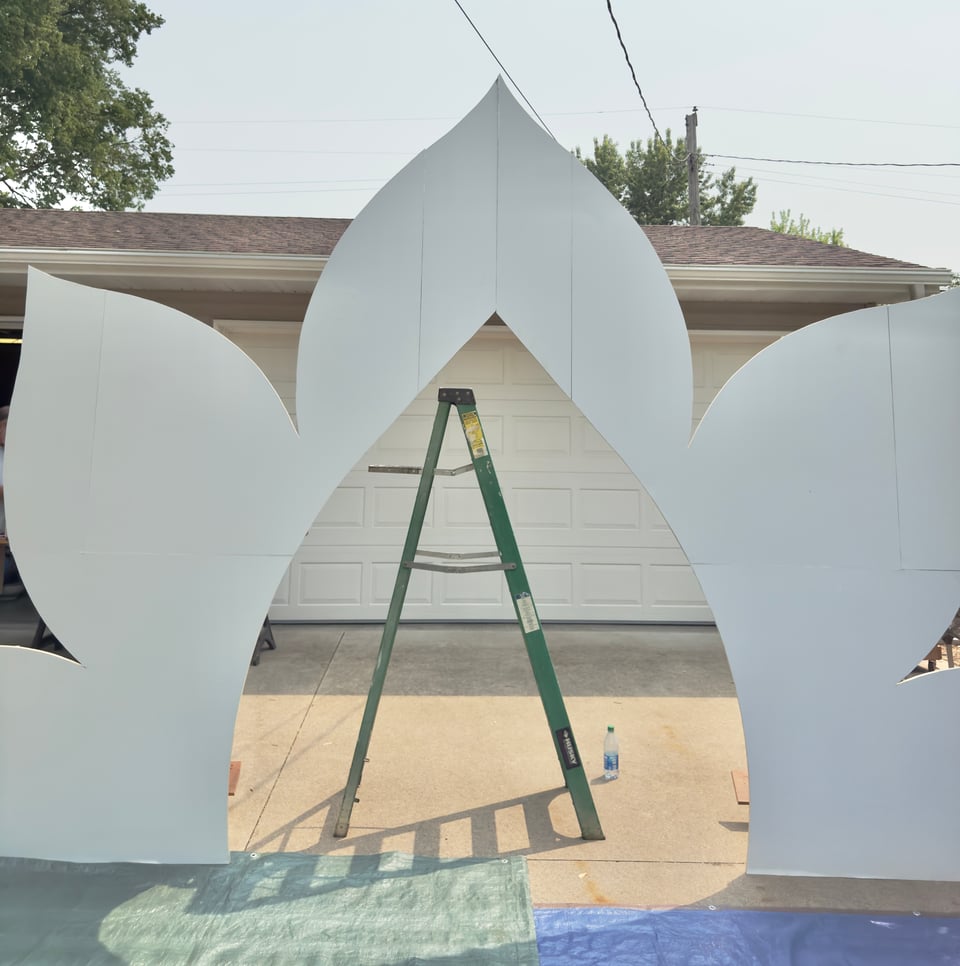
Regardless of the changes, it’s still heavy, awkward, and challenging to carry and load into and out of my van on my own.
Can it be done?
Absolutely.
Is it wise to spend 2+ hours on traveling, setting up, and taking down for hour long donation-based events where there’s a decent chance that I will not receive any donations or possibly any audience at all?
Not really.
If you’re shouting at your screen, “Get over yourself and ask for help!”, it’s not about me being chronically independent. It’s that the workload is so high and potentially frequent that I couldn’t reasonably ask for help without offering some sort of compensation, and that’s not currently an option for me.
Should I change my mind and do a ticketed event, it has to be in a space that’s not open to the public which means paying a rental fee. That puts me in the hole financially from the jump, praying that enough people sign up so I can at least cover the cost of the rental space. I’ve already been down that “spend money to make money” road when I participated in art fairs and it didn’t end well for me. I don’t think repeating that lesson is a good idea.
So as of right now, I’m in the process of figuring out the most practical way for me to move forward.
Last month I learned a lot both personally and professionally. It’s been exciting, depressing, and difficult.
It’s one thing to be humbled by being a beginner again when I’m more than two decades into my art career, it’s another to realize there isn’t a certain amount of hard work that’s going to move me out of the beginner stages. It’s mostly going to be luck.
There’s so much that I won’t know until I get experience, and I can’t get experience unless I’m able to demonstrate knowledge that is only acquired by having prior experience. This is a catch-22 that is faced by thousands of people in all types of work, so I know I’m not alone in my frustration. Nonetheless, it’s tough.
I’m doing my best to stay present while I continue to hope that my effort catches the winds of luck sometime soon.
As always, thank you so much for your continued support. It means a lot. I’m lucky that you’re here!
Until the next newsletter, be well!
Giesla
If you’re able and would like to help support my work financially, click the button below to make a donation! I greatly appreciate your consideration.
Add a comment: